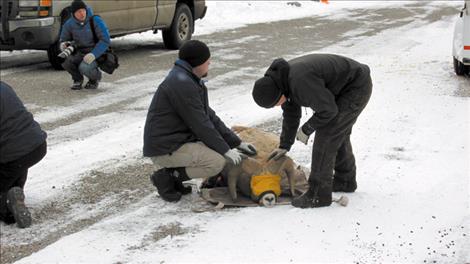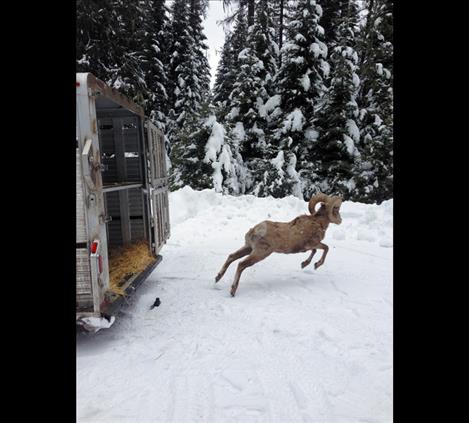Escapee bighorns euthanized to preserve wild herds
Hey savvy news reader! Thanks for choosing local.
You are now reading
1 of 3 free articles.
RAVALLI – Six sheep escaped from the National Bison Range were killed by Confederated Salish and Kootenai Tribes wildlife managers last week because of concerns that the animals may have come in contact with disease-carrying domestic livestock.
Tom McDonald, director of the tribal division of Fish, Wildlife, Recreation and Conservation, said the Tribes have a policy in place that is similar to the policy of Montana Fish, Wildlife, and Parks when it comes to sheep management. The strategy calls for the killing of sheep that break away from main herds, because if the animals make contact with domestic sheep or livestock, they are likely to contract fatal diseases.
“We want to preserve the integrity of the wild sheep, because the disease transmittal happens so easily,” McDonald said.
It is believed that the sheep escaped through a hole in fencing that was possibly caused by a digging bear. Older sheep usually aren’t small enough to fit beneath the holes, but it is not uncommon for younger sheep to make a break for it, McDonald said.
Wildlife managers are not alerted when the animals leave nor are they able to trace their whereabouts once they split from the main herd. Often, the animals gravitate toward other sheep and goats, where tiny germs pose a risk. If the wild sheep contract pneumonia or other ailments and head back to their main herd or take up with another wild herd, mass mortalities usually occur. It has devastated Montana herds in the past.
Tribal wildlife biologist Stacy Courville said studies of bighorns that were fenced in with domesticated sheep have resulted in 100 percent mortality.
“It’s like Native Americans and small pox and measles,” Courville said. “They have no immunity to the diseases. All domestics carry it and they aren’t affected by it but it has severe repercussions for bighorns.”
In this case, there were domestic sheep less than half a mile from the point of escape, leading wildlife managers to believe risk of contact was high.
“That would have been a 10 minute walk for these escapees out of the bison range,” McDonald said.
Several bighorn herds exist in the area. The Tribes manage two major herds in the Little Money/Big Draw area. They also reside in Ferry Basin and a few loners hang out in the Evaro area. Bighorns are also found on Wild Horse Island in Flathead Lake.
The Tribes ask that people immediately report any bighorns they see in areas where herds are not established, especially if the wild sheep have taken up with domestic livestock.
Courville said one ram had to be put down last summer after it was discovered that the wild sheep had been living with a domestic herd for more than two weeks. Courville immediately sent a game warden on a weekend assignment to kill the sheep after a friend of a friend notified him of its presence.
“I hate to think what couldn’t have happened if I hadn’t found out about it,” Courville said.
Bighorn sightings can be reported to tribal biologists at 406-883-2888.

















